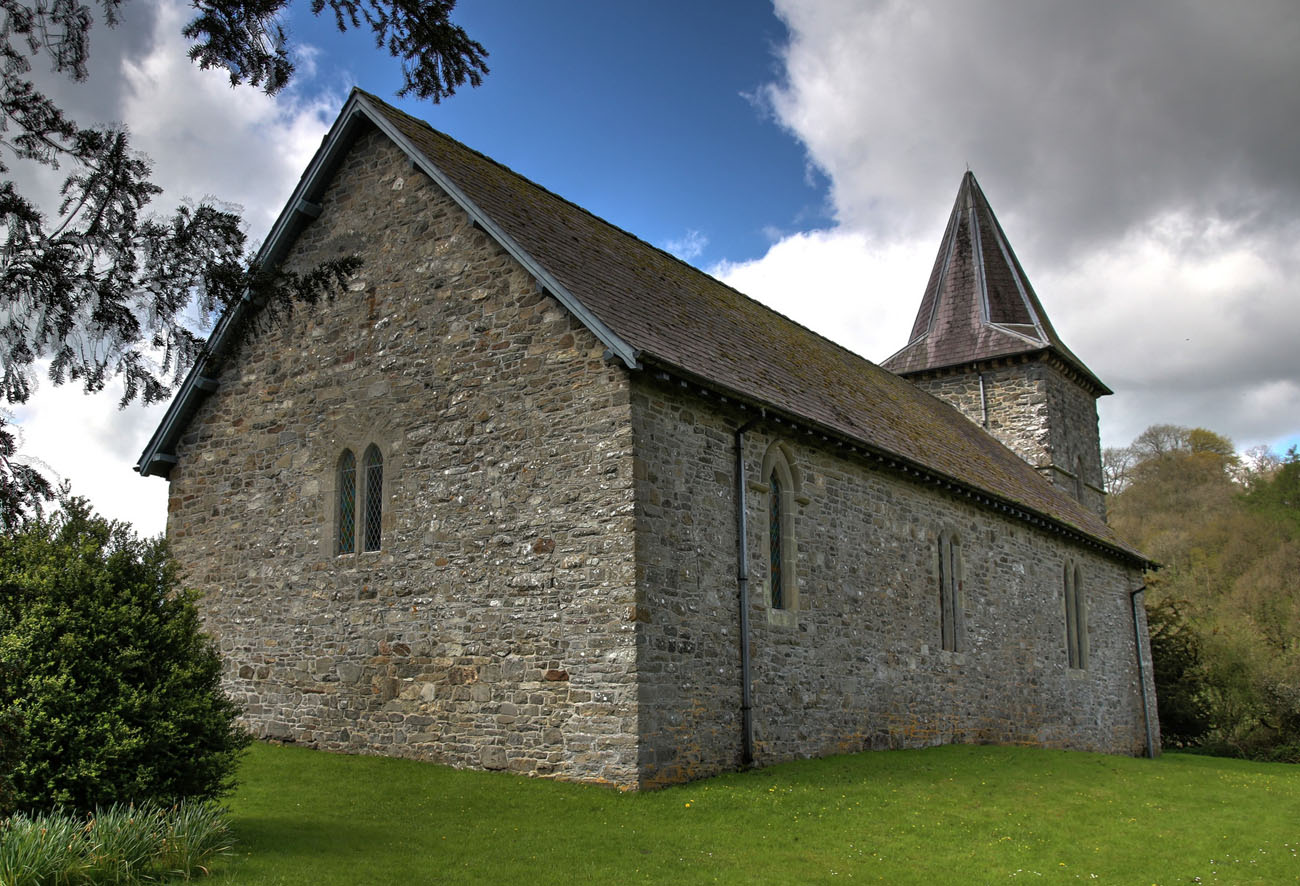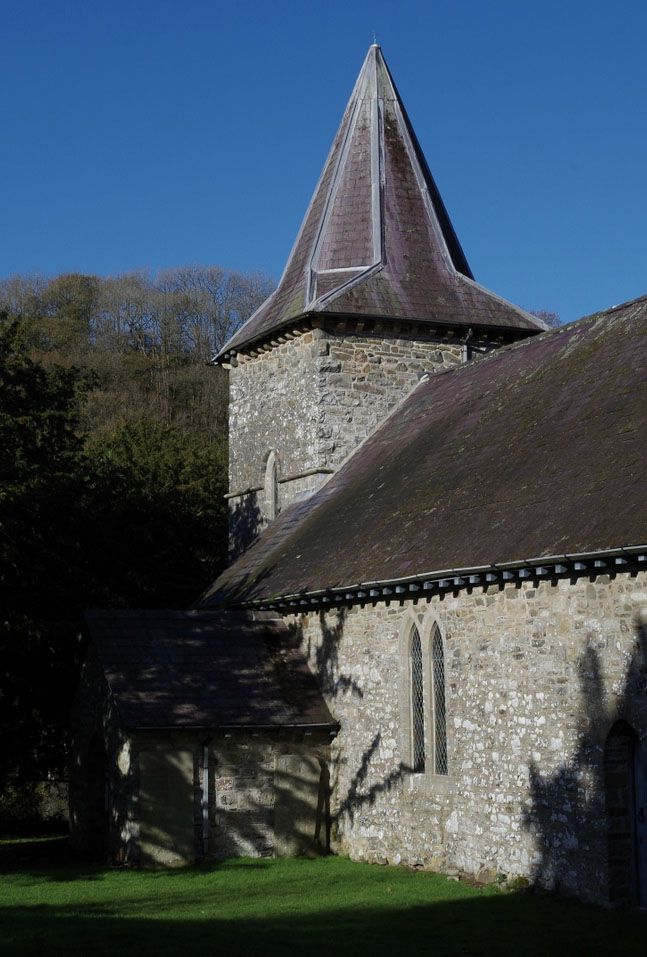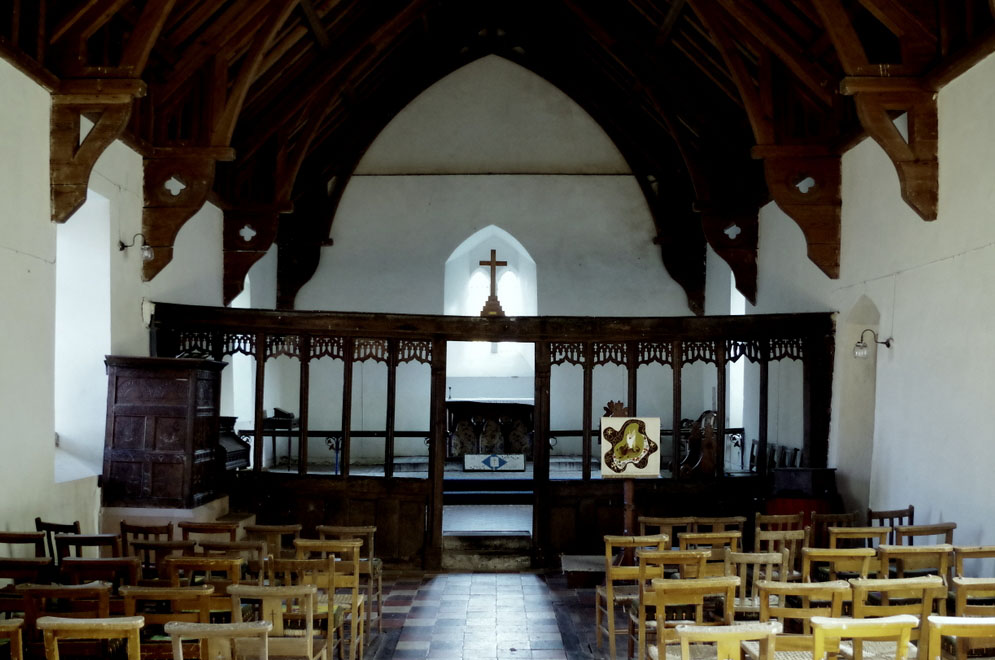History
The church of St. Michael was erected in the 13th century, but its call and the circular plan of the church cemetery suggest, that it could have been built on the site of an earlier building from the 10th or 11th century. The earliest written references to the building date from 1291. During this period under the Norman rule, a settlement developed near a nearby castle, which became a royal borough with market charter. At the end of the Middle Ages, the castle fell into disrepair, and the village decreased to a small hamlet, with the temple remained, as a symbol of better times. In the 16th century, construction works were carried out at the church, probably from this period the southern porch comes from. A major renovation was carried out at the end of the 19th century. It included a partial reconstruction of the walls, replacement of windows and a timber ceiling.
Architecture
The church was built on the bend of the River Ithon, which encircled it from the north and west, and further south. On the eastern side, the church was dominated by an oblong hill occupied by Cefnllys Castle, which secured the only land route into the meander of the river. The church was erected as an orientated building on an elongated rectangular plan, consisting only of the nave, without the externally separated chancel. On the west side, there is a low tower, and right next to it, at the southern wall of the nave, a 16th-century porch. The façades were most likely pierced by narrow lancet windows, perhaps doubled in some places. Inside, the priestly part was separated from the western part intended for the congregation by inserting a wooden rood screen partition.
Current state
Currently, the oldest element of the temple’s furnishings is the octagonal Norman baptismal font. The late-medieval painted rood screen has also been preserved in the church, divided into 6 sections on both sides of the door. The roof truss and some of the windows (especially on the south side) are the result of early modern renovation.
bibliography:
Kinross J., Discovering the smallest churches in Wales, Stroud 2007.
Salter M., The old parish churches of Mid-Wales, Malvern 1997.
The Royal Commission on The Ancient and Historical Monuments and Constructions in Wales and Monmouthshire. An Inventory of the Ancient and Historical Monuments in Wales and Monmouthshire, III County of Radnor, London 1913.



